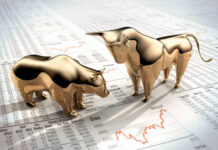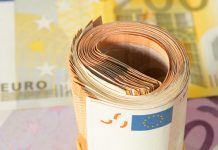Markets
It’s Fed-day. And with the ECB following on Thursday and the Bank of Japan on Friday it might sound strange, but we’ve probably already faced the two key events for this week. First and foremost, the hot UK payrolls and wage inflation. They are a huge wake-up call for the hesitant Bank of England (BEHIND THE CURVE) and together with last week’s RBA and BoC hawkish rate hikes an omen on how the Indian summer in the US and Europe might look like. And trust us, El Nino won’t be the only one to blame. The second important event was the Chinese 7d reverse repo rate cut which probably heralds a cut in the key 1y MT lending facility rate tomorrow. Chinese monetary policy to save the local and help the global economy might eventually work… you guessed it… inflationary! We can be brief on today’s market moves. Core bonds and stocks gains some ground with the dollar suffering. Moves occur orderly. EUR/USD rises north of 1.0840. It’s probably a preview of what to expect after the Fed skips a meeting in its normalization cycle for the first time in 15 months tonight. After all, given the central bank data dependency it’s back to square one when it comes to the July meeting whatever current thinking/market pricing.
Fed preview: Yesterday’s more or less in-line CPI figures basically cemented the case for a skip in the tightening cycle. That said, we do expect the Fed to add a hawkish flavour because of – amongst others – ongoing economic resilience, especially in the labour market and stalling/insufficient progress in the core disinflationary process. The dot plot serves as the perfect tool for this. The updated version will include a higher terminal rate than the one in March (set back then at the current 5-5.25%). 2024 may also see a higher rate level than expected previously. We don’t expect chair Powell to sound outright hawkish in the press conference afterwards though. He’ll stick to a data-dependent approach instead. With another rate hike almost fully priced in for either July or September, we think the dollar’s room for appreciation against the euro is limited. We might even be getting some buy-the-rumour, sell-the-fact. The US yield rally lost some steam at key technical references, likely triggering rebound action lower. The downside should be protected by the higher-for-longer strategy though. Unless markets take a skip for a pause and the pause eventually for a pivot…
News & Views
Swedish inflation followed the Norwegian example of last week by beating most estimates. Headline inflation using a fixed interest rate (CPIF) rose 0.1% m/m vs. expectations for flatlining. The yearly figure fell sharply from 7.6% to 6.7%. That was bang in line with consensus and even lower than the 7.1% the Riksbank had projected in April. It is by no means a relief though, as core CPIF only eased from 8.4% to 8.2%. That topped both analyst (7.8%) and Riksbank (8.1%) forecasts. Sticky prices make the disinflationary process a painstakingly slow one. In addition, the Swedish krone since the April policy meeting weakened another 2%+, posing upside inflation risks. The central bank last time around hinted at one more 25 bps rate hike either on June 29 or September 21 with odds clearly in favour of the former. But today’s data and the weak SEK suggest that even the level reached then (3.75%) may not suffice. The Swedish krone quickly erased a kneejerk leg higher after the data. EUR/SEK is trading higher for the day around 11.56 even as swap yields in the country rise up to 5.4 bps at the front.
Slovakia’s prime minister Odor in an interview with Bloomberg said his country risks being punished by financial markets if it doesn’t take steps to cut spending. Slovakia is running a projected 6%+ deficit this year, the biggest in over a decade as well as the eurozone’s widest gap. Public debt is expected to hit 58.5% of GDP in 2023. This compares to the 48% in 2019, prior to the spending done to cushion the impact from the pandemic and the Russian war in Ukraine. The government also introduced measures to soften the cost-of-living crisis. Inflation peaked at a 23-year high of 15.4% in February before easing to a still lofty 11.9% in May, according to data published this morning. Odor and his caretaker administration in the runup to the September 30 elections will prepare a set of measures to address the matter. These include a shift to targeted state aid and social payments, higher taxes on consumption and abandoning various tax exceptions.













